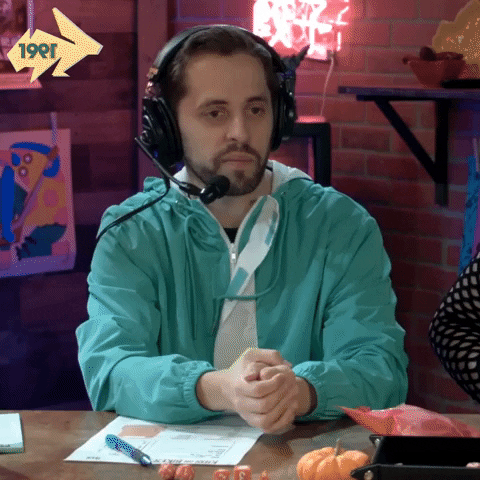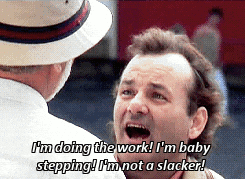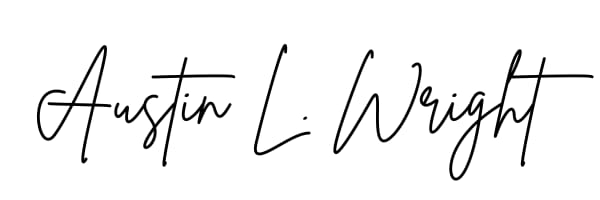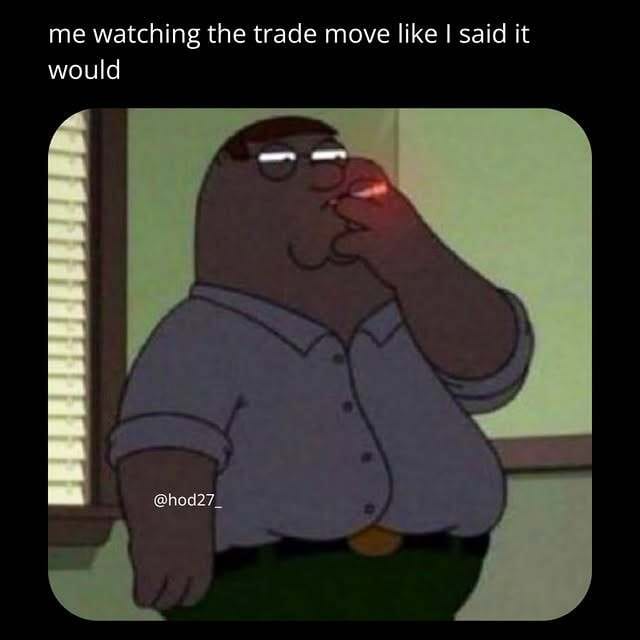- The High Performance Playbook
- Posts
- Why Resilience Separates Good from Great
Why Resilience Separates Good from Great
The High Performance Playbook
Welcome to Week 35 of the High Performance Playbook.
You’re now reading with almost 16,000 other high performers! Huge thank you for reading and continuing to share The High Performance Playbook with friends, family, and co-workers.
If you’re new and just tuning in to the HPP, we cover the strategies and frameworks that separate the 1% from the .01%. We dive deep into: health & fitness + longevity, personal finance & investing, business growth hacks, and how to optimize all areas of your life.
If any of those topics sound interesting, the High Performance Playbook is for you.

If you enjoy the content and get some value from it, please share this link with a few friends and help me spread the word! There’s no better compliment than a referral.
Ready? Start your engines… Let’s GO:

Before we dive into today’s newsletter….
I’m not an affiliate marketer. I’m not an “influencer.” And I don’t promote things to my network often… but this one’s different.
Most of the founders I talk to have their businesses dialed in.
Revenue’s up.
Teams are growing.
Deals are moving.
But behind the scenes? Their health is falling apart.
Truth is, we treat our companies like performance machines… and our bodies like an afterthought. Running on caffeine, stress, and 4-5 hours of sleep like it’s normal.
That’s why I wanted to share something I genuinely believe in:
My friend Anthony runs a company called Daily Body Coach, and it’s built specifically for high-performers like us.
He works with CEOs, execs, and entrepreneurs to design custom fitness and nutrition systems that actually fit your lifestyle.
This isn’t a cookie-cutter workout or nutrition plan. It’s:
Executive-level accountability
Personalized programs that adapt to your calendar, travel, and workload
A results-driven system that doesn’t require you to sacrifice your business to fix your body
If you’ve ever thought, “I just need someone to build the plan and hold me to it…” this is that.
It’s often difficult to get a spot with Anthony because he only takes a select number of clients each quarter, but right now he has availability, so I wanted to share with all of you.
Spots are limited and they only take on a handful of clients at a time. But if you’re serious about matching your physical performance to your professional one, this is the program I’d recommend… I’ve been through it myself and it’s LEGIT. No fluff, no guesswork.
Because your business isn’t the only thing that should be scaling. Your energy, focus, and longevity should be too.
Mindset & Psychology

The Resilience Filter: Reframe Pain as Momentum
Most people see pain as a stop sign.
High performers see it as a signal.
The difference isn’t in how much discomfort different people experience, but in how they interpret it. In other words, it’s not how much pain you feel that matters; it’s what you do with it.
In business, fitness, or personal growth, setbacks trigger one of two responses: avoidance or adaptation.
Those who adapt develop what we might call a “resilience filter.” Instead of labeling pain as failure, they treat it as feedback. A deal falls through? It’s data about timing or positioning. A training session feels miserable? It’s information about recovery or limits. Tension arises in a relationship? It’s an opportunity to refine communication or expectations.
This shift doesn’t make pain pleasant; it just makes it productive. Every difficult moment becomes part of the learning system instead of a reason to quit. The resilience filter converts emotional friction into momentum, keeping you from getting stuck in unproductive loops of frustration or self-doubt.
Building this filter requires awareness and deliberate reframing. When discomfort hits, pause and ask, “What is this moment trying to teach me?” The question disrupts emotional reactivity and turns your focus toward problem-solving.
Over time, these micro-adjustments strengthen your tolerance for uncertainty and pressure.
The most successful people aren’t pain-free. They’re pain-literate. They’ve trained their minds to treat resistance as a teacher.
By filtering pain through the lens of purpose and growth, they turn what used to stop them into what propels them forward. This results not only in resilience but in momentum, too.
Check out our new section below where we curate the biggest story of the week you may have missed in each of our core pillar categories.
😴 Biggest Story of the Week (Mindset & Psychology)
It’s Not the Pain, It’s the Mindset: How Attitude Outweighs Pain
University of Portsmouth study shows resilience is the key link between pain and performance. While this study was specifically referring to physical activity, it also points to the fact that training toward resilience can lead to better overall health.
Why it matters: Just like you’re physically healthier when you strengthen your resilience against pain, you also recover faster, act under stress more effectively, and maintain clarity when others shut down.

Health & Fitness + Longevity

Movement Windows: The New Productivity Lever
High performers are discovering that the traditional approach to fitness, strictly scheduled workouts at set times, misses a hidden productivity lever. It’s not only about hitting the gym or a morning run; it’s about strategically integrating movement into your day in small, high-impact windows. Think of it as micro-optimization for both body and brain.
Short, intentional bursts of activity can be more effective than one long session. A 10-minute walk after a meeting, a quick dynamic mobility sequence during a mid-morning break, or resistance-band exercises at your desk all prime your body and mind.
These moments aren’t just for burning calories. They improve circulation, boost oxygen delivery to the brain, and activate the nervous system. The result is heightened focus, faster decision-making, and increased energy.
Why does this work?
Human performance doesn’t live in neatly separated boxes of “work” and “workout.” The body and brain respond to movement in real time. Even one minute of mobility before a call can reset tension, enhance posture, and reduce cognitive fatigue.
Your brain interprets exercise cues as signals to shift gears, improving clarity and creative output. Over time, these micro-movements compound, much like small financial contributions to an investment account.
Movement windows also help counter the physiological cost of sedentary work. Sitting for long stretches slows circulation, tightens muscles, and drains energy.
By strategically placing movement throughout the day, you prevent these subtle but cumulative performance leaks.
Implementing this strategy is simple: identify natural pauses in your schedule and attach a short movement habit. Use meetings, coffee breaks, or transitions between tasks as anchors.
Even exercises as simple as bodyweight squats, torso rotations, or shoulder stretches are enough to trigger benefits.
Remember that high performance isn’t just about working harder or longer. It’s also about leveraging your body’s natural energy cycles. Strategic movement windows amplify cognitive function, physical resilience, and overall productivity.
By treating movement as an integrated part of your day rather than a separate task, you transform your work rhythm into a high-output, high-energy machine.
The small bursts you build today compound into the stamina and focus that define elite performance tomorrow.
🏃♂️ Biggest Story of The Week (Health & Fitness)
Micro-Movement Magnifies Workout Efficiency
Emerging evidence shows micro-movement breaks during long work sessions improve executive function, reduce fatigue, and enhance metabolic markers.
While it can’t replace more intense exercise, it can be a great way to efficiently magnify the benefits of your longer workouts.
Why it matters: When you work with your body’s design to move in windows, you stop battling inactivity and start using movement as performance infrastructure.

Personal Finance Tip of the Week

The Diversified Income Ecosystem
Most people think about income as a single line: a salary, a freelance gig, or maybe a one-off side hustle. High performers think differently.
They build what I call a “diversified income ecosystem,” a network of interrelated income streams that reinforce each other instead of existing in isolation.
The goal isn’t just more money: it’s stability, optionality, and strategic leverage.
At the foundation is a core business or role. This is your primary engine, your source of scale, skill development, and reputation.
The goal is to create a platform that can grow in value over time. When your core role or business is optimized, it powers everything else in the ecosystem.
Layered on top are recurring income streams. Think subscriptions, memberships, licensing deals, or service retainers. These streams are predictable and allow you to plan long-term without constantly trading hours for dollars.
They introduce discipline into your operations because recurring revenue requires systems, consistency, and reliable value delivery.
Unlike side hustles built haphazardly, these streams are intentionally designed to complement your core business.
The final layer is passive assets: investments that generate revenue with minimal active involvement. This could be dividend-paying stocks, real estate rentals, or royalties from intellectual property.
Passive assets are primarily about optionality. They give you freedom to experiment, take calculated risks, and double down on growth opportunities without fear of financial collapse.
The true power of this ecosystem comes from how these layers interact. Each income stream reinforces the others.
Recurring revenue stabilizes your core business, passive assets give you runway to invest in opportunities, and your primary business feeds new streams of recurring or passive income.
The network effect creates resilience against market volatility, economic shifts, or personal setbacks.
Perhaps most importantly, a diversified ecosystem encourages intentionality. When you rely on multiple streams, you treat each with care and strategy, not desperation.
You’re designing, monitoring, and improving each piece rather than scrambling for quick wins. The result is a financial architecture that compounds over time, multiplies your optionality, and cultivates discipline.
By building a diversified income ecosystem, you create a self-reinforcing machine that not only grows wealth but also strengthens freedom, focus, and long-term resilience.
💸 Biggest Story of the Week (Personal Finance)
Economically Stable Households Have Three or More Active Income Streams
Institutional data shows households with three or more active income streams have 35% greater resilience to economic shocks than those with only one wage.
While pop culture implies that it’s a big salary that makes someone wealthy, the reality is that it’s how they develop their own personal income stack.
Why it matters: Income diversity isn’t only safe. It creates flexibility, strategic leverage, and gives you options when you want to scale, pivot, or pause.

Business Playbook

Decision Debt: Why Every Unmade Choice Costs You
Every business leader understands financial debt. But few recognize the invisible kind that quietly compounds inside their operations: decision debt.
It’s the backlog of choices deferred, half-made, or avoided altogether, and it drains momentum more than almost any other form of inefficiency.
Decision debt builds when you delay clarity. That open role you haven’t defined, the vendor you keep meaning to replace, the strategy you’re “still evaluating;” each of these consumes attention, creates uncertainty, and signals hesitation to your team. Like interest on a loan, the cost rises over time.
Your interest on this debt is made up of every meeting revisiting the same issue, every employee waiting for direction, every opportunity missed because no one knew what to prioritize.
Most founders underestimate how much of their organization’s energy is tied up in waiting for them to decide. A leader’s job isn’t just to make good decisions; it’s to make them at the right tempo. High performers understand that speed compounds. A decision made and adjusted later often beats a perfect decision made too late.
Inaction preserves optionality in theory, but in reality, it freezes progress.
Avoiding decision debt starts with triage. Separate reversible from irreversible choices. If a call can be adjusted later, make it quickly. If it’s costly to unwind, slow down and design the framework carefully. The key isn’t to move recklessly but to maintain velocity without sacrificing wisdom.
Next, delegate decisional authority where outcomes don’t hinge on your personal judgment. When your team knows the boundaries, they can act without constant escalation. You clear your bandwidth for strategic calls, the ones that truly shape direction.
Finally, build closure into your culture. End meetings with clear ownership and timelines. Document outcomes. Celebrate resolution, not just discussion. The goal is to make decisiveness a shared habit, not a personal trait of the founder.
Decision debt never stays neutral. Every day you ignore it, it grows just like all interest: quietly and invisibly until it stalls your best people and slows your company’s growth. Pay it down early and often.
Clarity, even when imperfect, is almost always the better investment.
👨🏫 Biggest Story of the Week (Business)
Banks Face Hidden Productivity Debt Amid Organizational Complexity
A new McKinsey report highlights that many financial-services firms are quietly accruing “decision and efficiency debt.” Traditional cost-cutting and quick-win measures like offshoring, headcount reductions, or tech upgrades often fail to produce lasting gains.
Only one in four organizations sustains productivity improvements beyond four years. The root causes? Misaligned organizational structures, weak talent enablement, and fragmented decision-making processes.
Why it matters: Leaders underestimate how unresolved decisions, unclear roles, and underinvested teams quietly drain momentum. Firms that tackle these issues systematically, rethinking operating models, empowering employees, and building clarity into workflows, unlock durable efficiency and growth.

DOPAMINE HIT
Thanks for reading!
If you enjoyed this week’s newsletter, please share it with some friends! And thank you for reading!
🗓️ STAY TUNED:
Next week, we’ll look at how to avoid reactionary thinking and win through planning.
… Stay tuned. You won’t want to miss it!
Here’s to your success,

Austin L. Wright

Join my inner circle - Follow me on X for daily business breakdowns, lifestyle hacks, and a behind-the-scenes look at what my team and I are building.
Follow me on IG to see how I’m living the blueprint. I practice what I preach.
P.S.
We’re always looking to improve and create better newsletters for you in the future. If you have any feedback or suggestions for future editions, I’d love to hear from you! Just reply directly to this email and give me some ideas for how you think we could make it better!
If you’re reading this online, make sure you subscribe using the button below:
Disclaimer: The ideas shared in this newsletter are those of the author, and this is in no way intended to be medical, legal, or financial advice. Always do your own research and consult with licensed professionals.



Reply